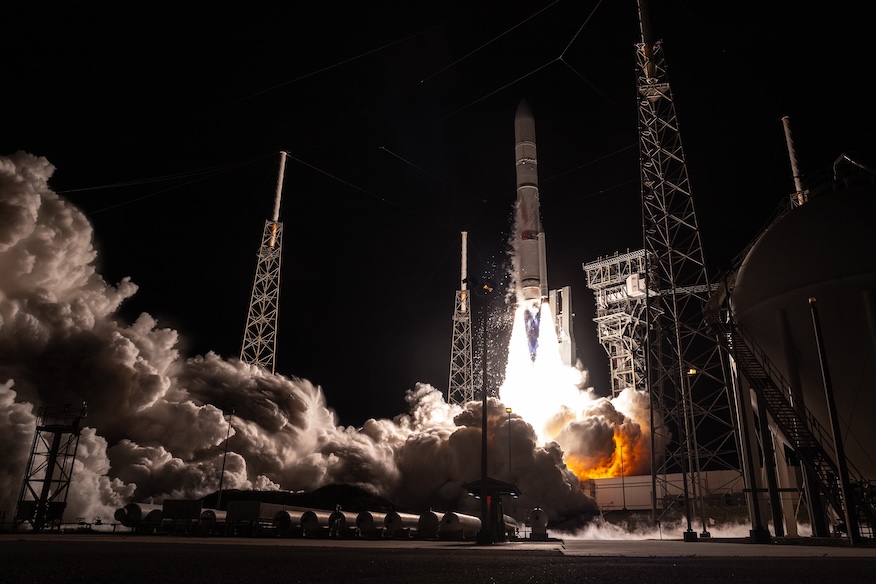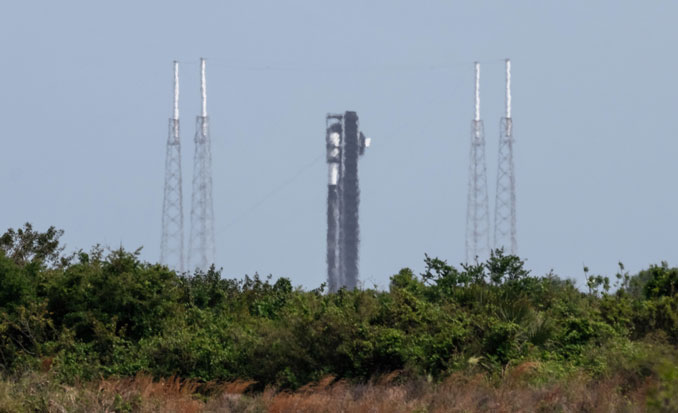
Sierra Space is getting one step closer to finally seeing its Dream Chaser spaceplane reach the launch pad. The spacecraft completed its environmental testing at NASA’s Neil Armstrong Test Facility in Sandusky, Ohio, last week.
The test campaign began back in January, when the vehicle arrived at the center to undergo shock and vibration testing in February, which lasted about five weeks.
That was followed by thermal vacuum testing, where the spaceplane named “Tenacity” and its Shooting Star cargo extension went through more than a month of being exposed to a range of temperatures, ranging from -150°F to 250°F.
“Successful completion of an incredibly rigorous environmental testing campaign in close partnership with NASA is a significant milestone and puts Dream Chaser on track for operations later this year,” said Sierra Space CEO, Tom Vice, in a statement. “This is the year that we transition from rigorous research and development to regular orbital operations and – in doing so – transform the way we connect space and Earth.”
With this campaign behind them, Sierra Space is now preparing to load up Dream Chaser and Shooting Star for shipment down to NASA’s Kennedy Space Center. Once it arrives at the Space Systems Processing Facility (SSPF), teams will finish adding the thermal protection tiles and perform additional checkouts, like acoustic testing.
Sierra Space has been working towards this goal for some time. It pivoted from a crewed version of the vehicle to the cargo variant when it was chosen as part of NASA’s $14 billion indefinite delivery indefinite quantity (IDIQ) firm fixed price Commercial Resupply Services 2 (CRS-2) contract in 2016. SpaceX and Northrop Grumman, the two companies selected for the original CRS contract, were also part of this deal.
In March 2022, NASA ordered 12 additional missions from Northrop Grumman and SpaceX, six apiece, which will be conducted through 2026. That brought up the total number of missions ordered under CRS-2 to the following:
- 14 – Northrop Grumman
- 3 – Sierra Space (originally the Sierra Nevada Corporation)
- 15 – SpaceX
Vulcan Cert-2
The spaceplane is set to be the payload for United Launch Alliance’s second certification mission for its Vulcan rocket. It will be the first of seven contracted missions using the rocket.
If all goes to plan with Dream Chaser, the launch will have to work around a number of items on the ISS calendar, including four missions set to launch on SpaceX Falcon 9 rockets. Crew-9 is set to lift off in the August timeframe to relieve the Crew-8 quartet and NASA is looking at no earlier than October for the fourth private astronaut mission via Axiom Space.
There are also the launches of SpaceX’s 31st (SpX-31) and Northrop Grumman’s 21st (NG-21) cargo missions under the CRS-2 contract, which are anticipated in the back half of 2024 as well.
While ULA is planning on Tenacity being the second payload for Vulcan, that could change, if there are issues that come up in the next round of testing. In a social media post, ULA President and CEO Tory Bruno stated that “we have a backup if they have an issue,” but otherwise are anticipating a launch sometime this fall.
In the Fall, as soon as Dream Chaser is ready. And, yes, we have a backup if they have an issue.
— Tory Bruno (@torybruno) May 7, 2024
A defense official who spoke with Space News said that using a mass simulator could be a potentially viable alternative for ULA, if Dream Chaser doesn’t meet its current launch goals for this fall.
This news comes on the heels of a letter sent Friday to the heads of both Lockheed Martin and Boeing from Air Force Assistant Secretary Frank Calvelli. The Washington Post broke the story.
The letter stated Calvelli was “concerned” about the timeline for Vulcan’s development and “ULA’s ability to scale manufacturing of its Vulcan rocket and scale its launch cadence to meet our needs.”
In an interview with Spaceflight Now in January, Bruno said the company was making good progress towards the planned launch rate of 25 rockets per year, or about a launch every two weeks, by “the back half of 2025.” He noted the completion of ULA’s finished goods warehouse near their main factory in Decatur, Alabama, and teased the arrival of a second barge to transport rocket components (formally unveiled last week).
Bruno said that some of their suppliers, like L3Harris, which supplies the avionics, and Northrop Grumman, which manufactures the solid rocket motors, were both expanding their production lines in order to ramp up capability.

He said in that interview, and again during a March press conference, that Blue Origin’s factory space in Huntsville, Alabama, was also doubled to increase output of their BE-4 engines, which power the booster stage of Vulcan. Bruno said because Blue Origin was behind their other suppliers in regard to development, ULA couldn’t fully move into their full “work ahead” model to reach a rate of launching every two weeks until the back half of 2025.
“We’re not really going to be on the build ahead plan this year and the front part of next year with Blue Origin until they then really hit their stride and they hit the production rate we’re looking for,” Bruno said in March. “And then, they’ll catch back up and they’ll build up an inventory, like everybody else.”
In his written remarks submitted to the House Subcommittee on Strategic Forces, Calvelli emphasized the importance of completing Cert-2 as the key event that opens up to national security missions. ULA was awarded 60 percent of all the National Security Space Launch (NSSL) Phase 2 missions, which amounts to a value of $3.12 billion, according to the U.S. Space Systems Command (SSC).
“Failure to complete the second certification flight will delay the launch of critical national security payloads this year, including GPS III-7, USSF-106, and USSF-87,” Calvelli wrote. “In parallel, Blue Origin needs to scale its production of BE-4 engines. We are keeping an eye on whether these two companies can scale to meet our needs.”
According to SSC, USSF-106, which is described as a “multi-manifest mission,” is set to be the first NSSL mission for Vulcan. It will carry the Navigation Technology Satellite-3 payload and another undisclosed U.S. Space Force payload.



